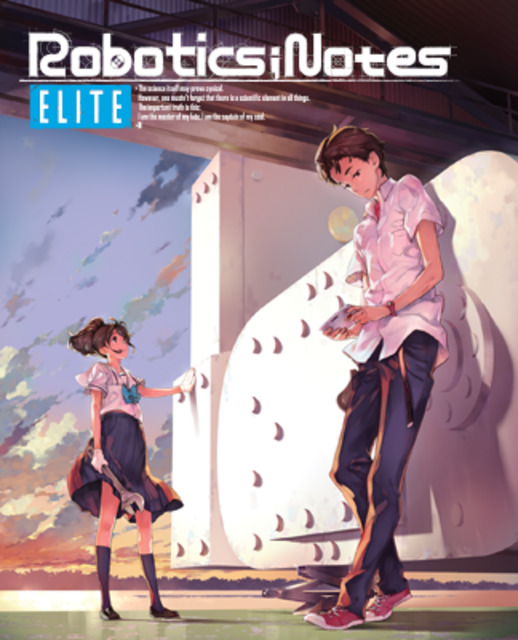Mecha Anime Dreams
Mages, the developer behind the immensely popular Steins;Gate as well as the lesser known Chaos;Head, is back at it again with the third main entry in the Science Adventure series, Robotics;Notes. The SciAdv games are lauded for their excellent characters, modern Japanese setting and fascinating mix of real and pseudo-science. Robotics;Notes, while not necessarily a sequel, takes place after the events in those games and includes numerous references and cameos.
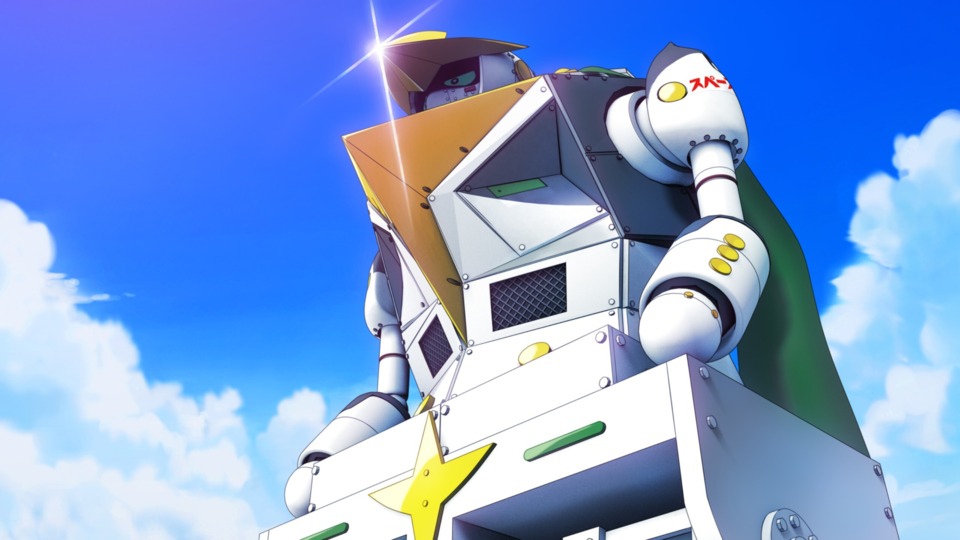
Robotics;Notes is a relatively light hearted, slice-of-life tale, about a group of high school students who want to construct a giant bi-pedal robot. The Elite version is the same as the base game, but includes better graphics and Anime cutscenes. The story is unfortunately poorly paced and includes a frustrating pixel hunt mini-game. Completing the game demands a walkthrough to experience the story in the intended order. Robotics;Notes’ only saving grace is the wonderfully developed cast of characters.
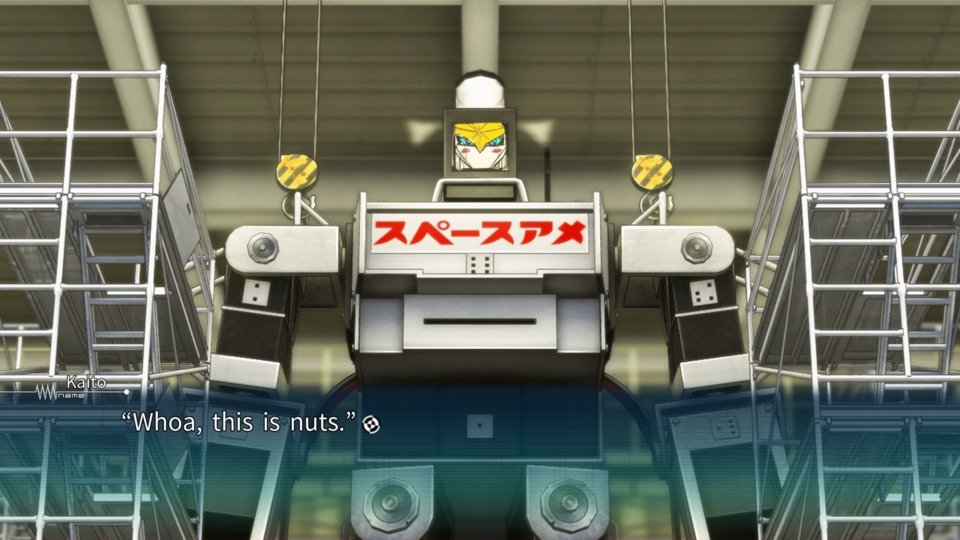
The game takes place in the far flung future of 2019… (the game was released in Japan in 2012, but only received a western release in 2020). The setting in Robotics;Notes mirrors that of our world, except that robots are commonplace. There are assistant droids that do menial tasks and exo-skeleton suits that enable mobility for the handicapped. Everyone also uses a tablet-like device called a PokeCom, equivalent to a smartphone equipped with Augmented Reality (AR) capabilities.
You play as Kaito, a gamer who spends most of his time trying to be the best at the robot fighting game Kill-Ballad. He lives on the small island of Tanegashima, located in southwest Japan, famous for being the location of JAXA , the NASA equivalent of Japan. Kaito is best friends with his childhood neighbor Akiho, who is the president of the Robotics Club at their local high school. Kaito is also a member, but curiously has no interest in robots except for the robots in his video game. Akiho meanwhile, is a diehard fan of the “Gunvarrel” anime and wants to recreate the robot in real life. The pair are the only remaining members of the Robotics Club and are faced with the danger of shutting down due to lack of funding and progress. The duo, through a combination of personal connections and luck, eventually bolster their members and build the robot of their dreams. In addition, Kaito discovers a secret on the island involving a conspiracy known as Project Atum, that will change the fate of the world.
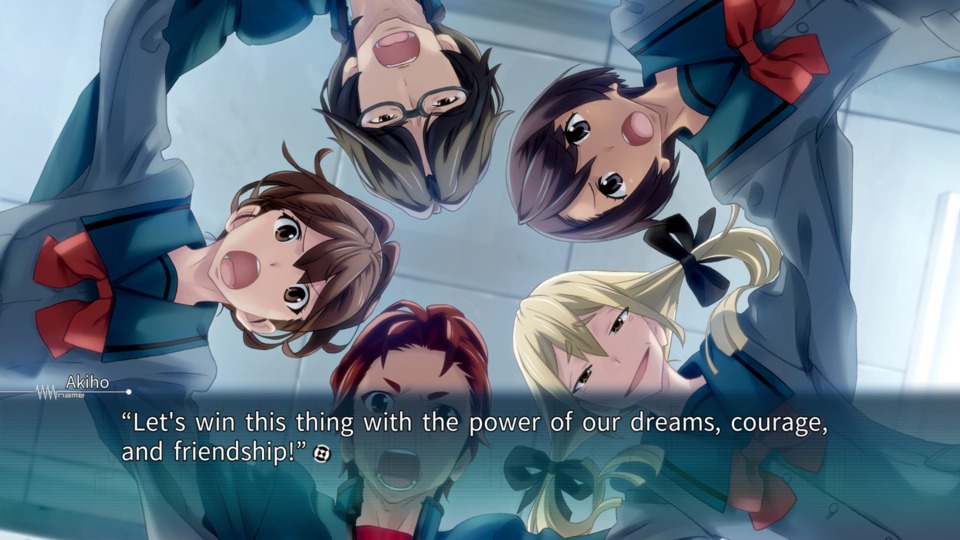
Robotics;Notes plays like a standard Visual Novel with extra gimmicks. While you mostly play as Kaito, the game will occasionally change perspectives, to get deeper insights on other characters’ feelings. When you are in control of Kaito, you can open his PokeCom to access Twipo, a Twitter analog. The inclusion of Twipo is quite interesting because it is a passive storytelling device. It is a great way to learn more about the lesser known characters like Kaito and Akiho’s parents and their interactions with one another. The problem with Twipo is that it regularly updates after each scene change. Players interested in the game’s lore will find themselves constantly checking the app like a phone addicted teenager. Use of Twipo is completely optional except for ONE unremarkable day where you have to reply to a specific character to achieve one of the four phases. All four phases have to be acquired before the true ending can be unlocked. I find it insulting that the game never emphasizes the importance of this day nor does it explain how to achieve the different phases. I cannot imagine anyone figuring this out without a walkthrough. The phases themselves are confusingly treated as “endings”, but take place in chronological order. Why Mages decided to do this, instead of making a single straight storyline is a complete mystery. To be fair, Steins;Gate had a similar issue with unlocking its true ending, but at least the endings concluded properly and the story can be experienced in a chronological order without a walkthrough.
Besides Twipo, Kaito can also use other apps on the PokeCom. He can also access a map that displays his current location. He can play KillBallad, a simple QTE game with a generous time window. Lastly, he can access IRUO, an AR app that enables him to see geotags. Similar to Twipo, IRUO will have to be accessed frequently for those interested in the game’s lore or getting achievements. Eventually Kaito will also have to use IRUO to find hidden geotags across the island. It’s a complete timesink, equivalent to finding a needle in a haystack, so use of a walkthrough is highly recommended.
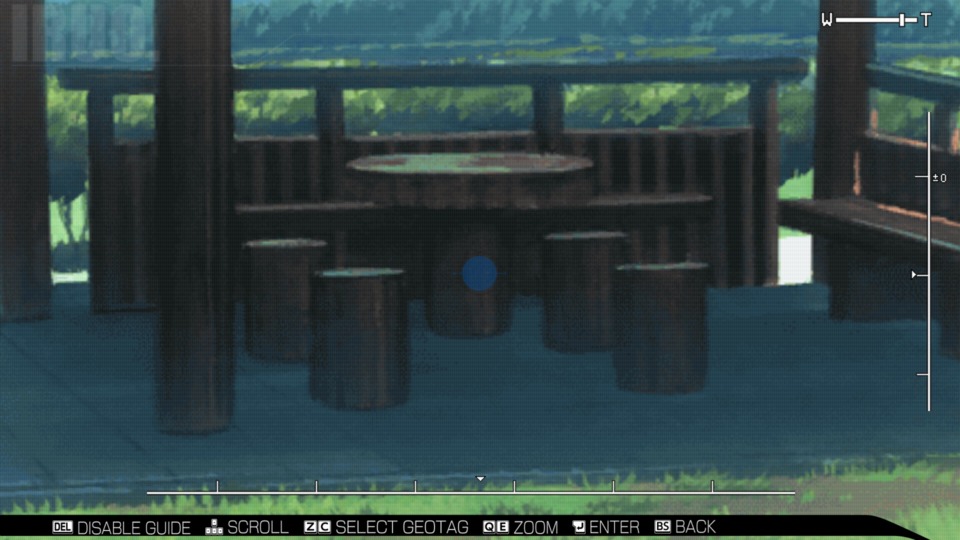
Robotics;Notes stands out from its predecessors with the presentation. Instead of 2D character art, the game opts for 3D characters placed on the foreground on a 2D background. While this doesn’t sound particularly innovative, it is a remarkable shift considering that VN games are generally produced on paper-thin budgets. The use of 3D character models is tricky because unless a studio uses motion capture, faces tend to look emotionless. Fortunately Robotics;Notes passes this hurdle with flying colors. Characters are wonderfully expressive and their body language matches the tone of their voices. Akiho is a joy to watch; you can feel her sense of optimism and hope when she says her favorite line in Gunvarrel.
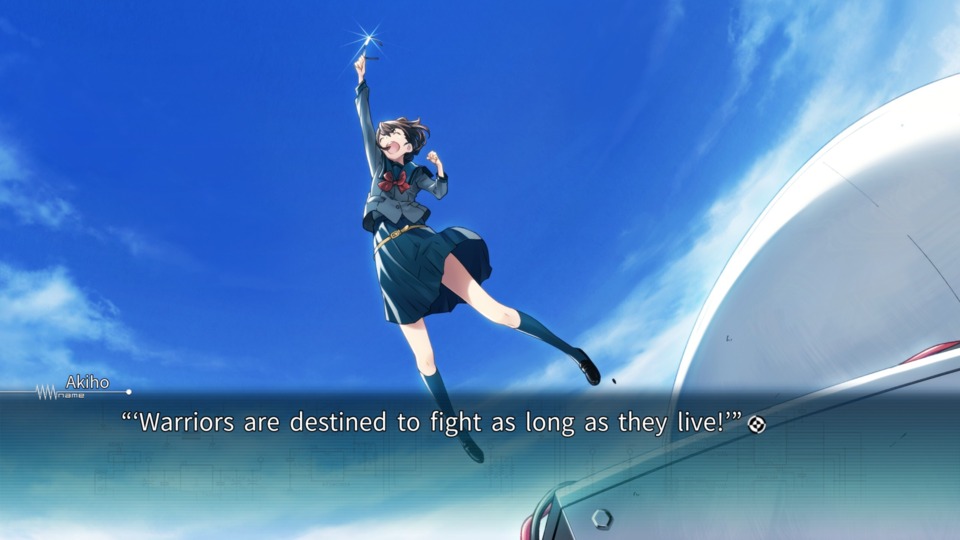
I have some qualms with the story and I will keep the spoilers light. The writing in Robotics;Notes is extremely verbose. Characters tend to spout on and on and fall into stereotypes each time they appear. The nerd always spouts a line saying that “X is nonsense”. A horny character always mentions an inappropriate sex joke. And a timid character always apologizes for everything. The story over-explains itself even if it is not related to the plot. An example of this is how the protagonist explains why he drives a scooter. You’d think an easy explanation would be: “There is no reliable public transportation and they need scooters to get around”, but instead the game goes on a detailed explanation of how high school students who are farther from a 15 minute bus commute are allowed to use scooters even if they are underage.The final act also rubbed me the wrong way as the plot escalates to an absurd degree. The game starts to become more like a “dumb” Summer Blockbuster movie than a carefully written masterpiece.
Ironically, the game also chooses not to explain other phenomena and assumes you’ve played the past SciAdv games. Notice that strange number with many decimal places in the intro movie?. How about the line “Whose eyes are those eyes?”. Both of these things are never addressed. It gets even worse further into the story when Kaito and his friends encounter a familiar character from Steins;Gate. The game basically assumes you’ve played Steins;Gate because they never explain this character’s backstory.
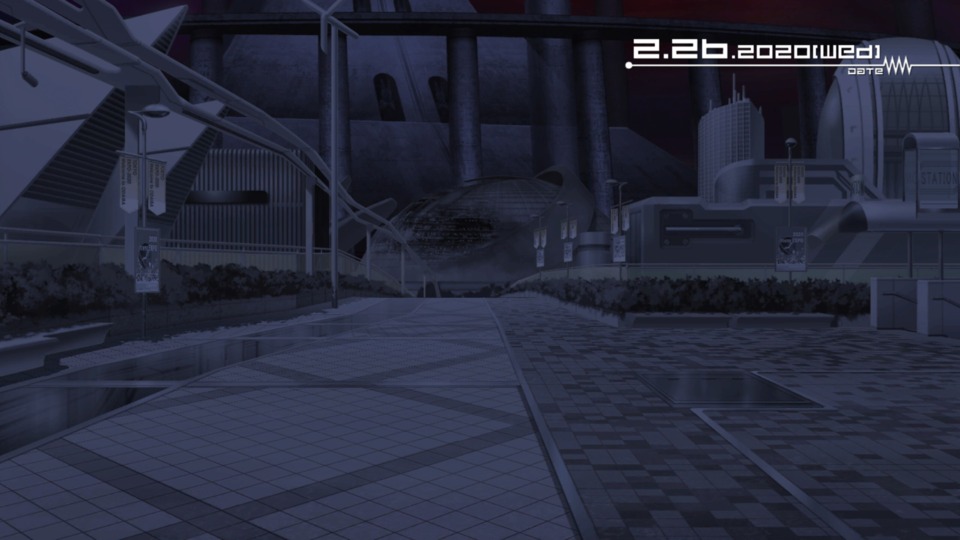
Like its predecessors Robotics;Notes does depict some content that some may find off-putting. There is a scene where a main character attempts to commit suicide; An interaction between an older woman and a teenager that can be interpreted as grooming; And lastly a scene between a teenager who is 18 and a younger girl who is 12 that blurs the line between a platonic and romantic relationship. To be clear, the game does not depict any scenes of nudity or sex, the game is not eroge.
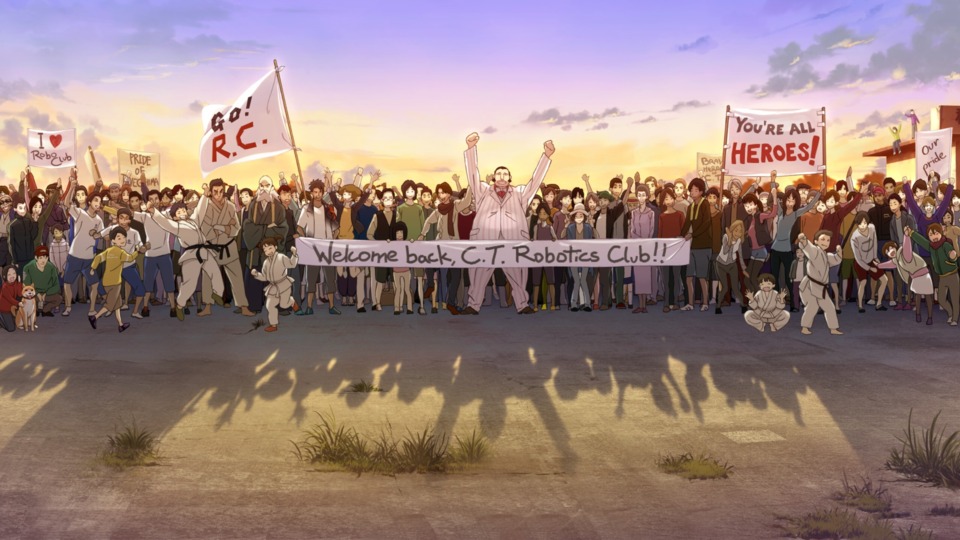
Robotics;Notes is a love letter to mecha anime fans or anyone who enjoys robots in general. It has a charming roster of characters who have complicated backstories and relationships. The game also features expressive 3D character models that surpasses the presentation found in most VN games. Robotics;Notes is also completely frustrating to playthrough without the use of a walkthrough. It has a poorly paced middle chapter requiring the player to replay the section multiple times to unlock phases to continue to the end game. And the numerous references and cameos from past games will be completely lost on new players. If you can look past these flaws or are already a Chaos;Head and/or Steins;Gate fan, Robotics;Notes is a recommended play.
